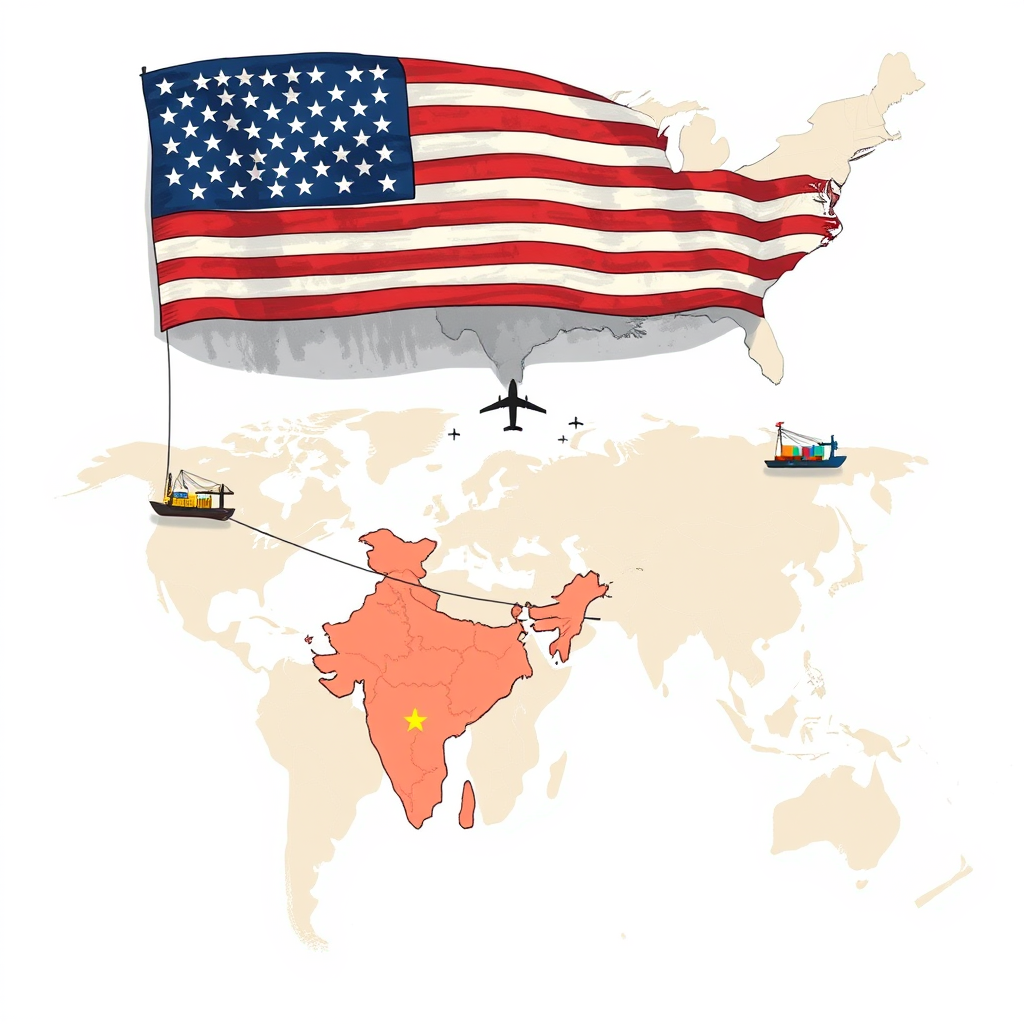Trump Tariffs Push India and China Closer?

Escalating trade tensions between the United States and China are unexpectedly fostering a potential rapprochement between India and China. Recent statements from Beijing suggest a willingness to strengthen economic ties with New Delhi, a shift analysts attribute to the damaging impact of Donald Trump’s aggressive tariff policies. The US has now imposed a staggering 104% tariff on Chinese goods, prompting a retaliatory response from Beijing and igniting a full-blown trade war.
The Chinese Embassy in Delhi has publicly called for India and China to “stand together to overcome difficulties,” framing the US tariffs as a deprivation of development rights for countries in the Global South. Spokesperson Yu Jing emphasized the mutual benefits of a strong China-India economic relationship, implicitly positioning the two nations as allies against perceived American aggression. This message was reinforced by President Xi Jinping himself, who, in a meeting with India’s President Droupadi Murmu, advocated for increased cooperation.
While historically strained – particularly following the 2020 border clashes in Galwan Valley – relations between India and China appear to be thawing. A recent border patrol agreement and meetings between Prime Minister Narendra Modi and President Xi signal a willingness to move beyond longstanding disputes. China’s Foreign Minister Wang Yi has echoed this sentiment, urging both nations to “take the lead in opposing hegemonism and power politics.”
The shift is undeniably pragmatic. China, facing crippling tariffs, sees a strengthened relationship with India as a potential counterbalance to US economic pressure. However, the timing is also noteworthy. The US, while imposing substantial tariffs on China, has adopted a comparatively softer approach towards India, announcing “discounted” tariffs of 26% (on top of an existing 10%) – a clear attempt to maintain a strategic partnership with New Delhi.
India, while also facing tariff increases, has notably refrained from retaliating, instead signaling a willingness to address trade imbalances and potentially lower its own tariffs. Delhi is reportedly exploring a clause that offers reprieve to trading partners who actively work to remedy non-reciprocal trade arrangements. This cautious approach, combined with the overtures from Beijing, suggests India is carefully navigating a complex geopolitical landscape.
The situation presents a fascinating dynamic. While the US aims to reshape global trade through protectionist measures, it may inadvertently be pushing two major powers closer together. Whether this newfound cooperation will translate into a lasting strategic alliance remains to be seen, but the current trajectory suggests a significant shift in the balance of power. It’s a clear demonstration of how trade policy can have far-reaching geopolitical consequences, and how even adversarial relationships can be reshaped by external pressures.